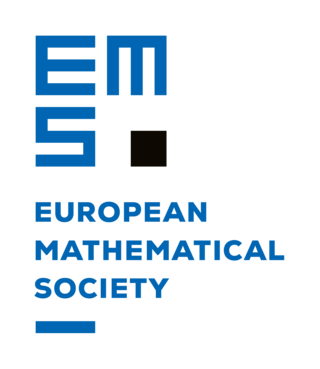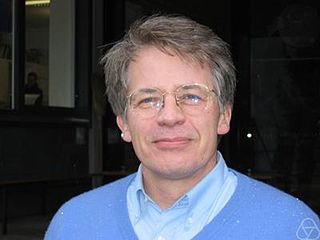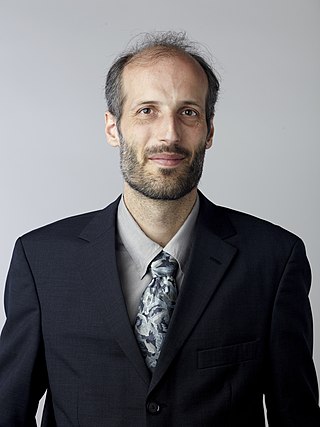Related Research Articles

Alain Connes is a French mathematician, known for his contributions to the study of operator algebras and noncommutative geometry. He is a professor at the Collège de France, Institut des Hautes Études Scientifiques, Ohio State University and Vanderbilt University. He was awarded the Fields Medal in 1982.

The Fields Medal is a prize awarded to two, three, or four mathematicians under 40 years of age at the International Congress of the International Mathematical Union (IMU), a meeting that takes place every four years. The name of the award honours the Canadian mathematician John Charles Fields.

The International Mathematical Union (IMU) is an international non-governmental organization devoted to international cooperation in the field of mathematics across the world. It is a member of the International Science Council (ISC) and supports the International Congress of Mathematicians (ICM). Its members are national mathematics organizations from more than 80 countries.
The IMU Abacus Medal, known before 2022 as the Rolf Nevanlinna Prize, is awarded once every four years at the International Congress of Mathematicians, hosted by the International Mathematical Union (IMU), for outstanding contributions in Mathematical Aspects of Information Sciences including:
- All mathematical aspects of computer science, including computational complexity theory, logic of programming languages, analysis of algorithms, cryptography, computer vision, pattern recognition, information processing and modelling of intelligence.
- Scientific computing and numerical analysis. Computational aspects of optimization and control theory. Computer algebra.

The American Mathematical Society (AMS) is an association of professional mathematicians dedicated to the interests of mathematical research and scholarship, and serves the national and international community through its publications, meetings, advocacy and other programs.
The International Congress of Mathematicians (ICM) is the largest conference for the topic of mathematics. It meets once every four years, hosted by the International Mathematical Union (IMU).

The European Mathematical Society (EMS) is a European organization dedicated to the development of mathematics in Europe. Its members are different mathematical societies in Europe, academic institutions and individual mathematicians. The current president is Jan Philip Solovej, professor at the Department of Mathematics at the University of Copenhagen.

David Breyer Singmaster was an American-British mathematician who was emeritus professor of mathematics at London South Bank University, England. He had a huge personal collection of mechanical puzzles and books of brain teasers. He was most famous for being an early adopter and enthusiastic promoter of the Rubik's Cube. His Notes on Rubik's "Magic Cube" which he began compiling in 1979 provided the first mathematical analysis of the Cube as well as providing one of the first published solutions. The book contained his cube notation which allowed the recording of Rubik's Cube moves, and which quickly became the standard.
Mathematical Reviews is a journal published by the American Mathematical Society (AMS) that contains brief synopses, and in some cases evaluations, of many articles in mathematics, statistics, and theoretical computer science. The AMS also publishes an associated online bibliographic database called MathSciNet, which contains an electronic version of Mathematical Reviews and additionally contains citation information for over 3.5 million items as of 2018.

Lennart Axel Edvard Carleson is a Swedish mathematician, known as a leader in the field of harmonic analysis. One of his most noted accomplishments is his proof of Lusin's conjecture. He was awarded the Abel Prize in 2006 for "his profound and seminal contributions to harmonic analysis and the theory of smooth dynamical systems."

Yakov Grigorevich Sinai is a Russian–American mathematician known for his work on dynamical systems. He contributed to the modern metric theory of dynamical systems and connected the world of deterministic (dynamical) systems with the world of probabilistic (stochastic) systems. He has also worked on mathematical physics and probability theory. His efforts have provided the groundwork for advances in the physical sciences.

Robert Louis Griess, Jr. is a mathematician working on finite simple groups and vertex algebras. He is currently the John Griggs Thompson Distinguished University Professor of mathematics at University of Michigan.
The DST-ICTP-IMU Ramanujan Prize for Young Mathematicians from Developing Countries is a mathematics prize awarded annually by the International Centre for Theoretical Physics in Italy. The prize is named after the Indian mathematician Srinivasa Ramanujan. It was founded in 2004, and was first awarded in 2005.

Sir Martin Hairer is an Austrian-British mathematician working in the field of stochastic analysis, in particular stochastic partial differential equations. He is Professor of Mathematics at EPFL and at Imperial College London. He previously held appointments at the University of Warwick and the Courant Institute of New York University. In 2014 he was awarded the Fields Medal, one of the highest honours a mathematician can achieve. In 2020 he won the 2021 Breakthrough Prize in Mathematics.
Jun-ichi Igusa was a Japanese mathematician who for over three decades was on the faculty at Johns Hopkins University. He is known for his contributions to algebraic geometry and number theory. The Igusa zeta-function, the Igusa quartic, Igusa subgroups, Igusa curves, and Igusa varieties are named after him.

Richard Sheldon Palais is an American mathematician working in differential geometry.
M. Susan Montgomery is a distinguished American mathematician whose current research interests concern noncommutative algebras: in particular, Hopf algebras, their structure and representations, and their actions on other algebras. Her early research was on group actions on rings.
This is a timeline of women in mathematics.

Svetlana Yakovlevna Jitomirskaya is a Soviet-born American mathematician working on dynamical systems and mathematical physics. She is a distinguished professor of mathematics at Georgia Tech and UC Irvine. She is best known for solving the ten martini problem along with mathematician Artur Avila.
Thomas W. Hawkins Jr. is an American historian of mathematics.
References
- 1 2 Guillermo P. Curbera (2009). Mathematicians of the World, Unite! (PDF). CRC Press.
- ↑ "IMU-Net 83: May 2017". International Mathematical Union. Retrieved 2023-12-10.
- ↑ Olli Lehto (1998). Mathematics Without Borders: A History of the International Mathematical Union. Springer-Verlag.
- ↑ "IMU-Net 1: September 2003". International Mathematical Union. Retrieved 2023-12-10.
- ↑ "New Publications Offered by the AMS" (PDF). Notices of the AMS. Vol. 49, no. 9. 2002. p. 1143.
- ↑ "CEIC 2011 Activity Report" (PDF). International Mathematical Union. Retrieved 2023-12-10.